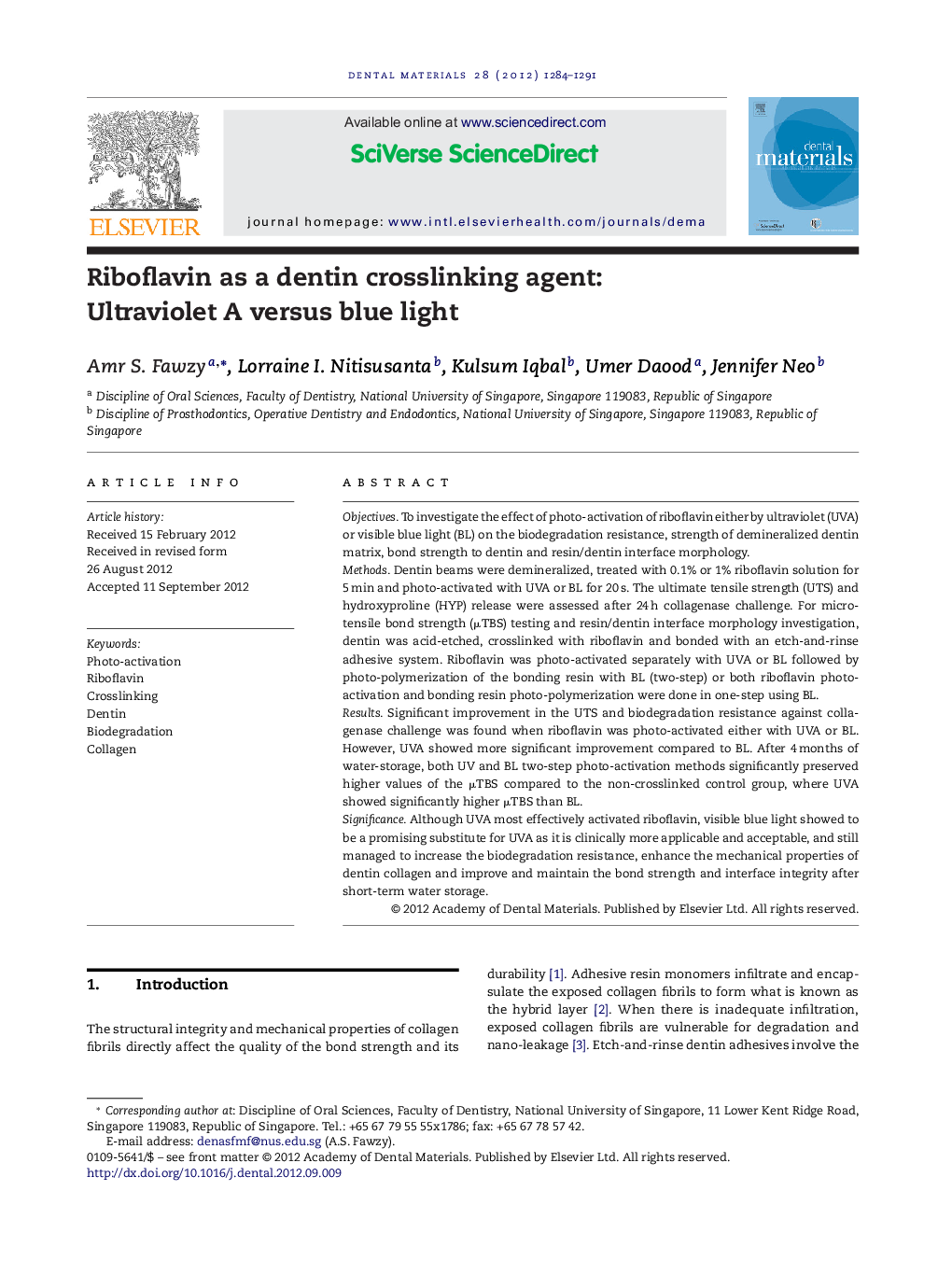| Article ID | Journal | Published Year | Pages | File Type |
|---|---|---|---|---|
| 1421431 | Dental Materials | 2012 | 8 Pages |
ObjectivesTo investigate the effect of photo-activation of riboflavin either by ultraviolet (UVA) or visible blue light (BL) on the biodegradation resistance, strength of demineralized dentin matrix, bond strength to dentin and resin/dentin interface morphology.MethodsDentin beams were demineralized, treated with 0.1% or 1% riboflavin solution for 5 min and photo-activated with UVA or BL for 20 s. The ultimate tensile strength (UTS) and hydroxyproline (HYP) release were assessed after 24 h collagenase challenge. For micro-tensile bond strength (μTBS) testing and resin/dentin interface morphology investigation, dentin was acid-etched, crosslinked with riboflavin and bonded with an etch-and-rinse adhesive system. Riboflavin was photo-activated separately with UVA or BL followed by photo-polymerization of the bonding resin with BL (two-step) or both riboflavin photo-activation and bonding resin photo-polymerization were done in one-step using BL.ResultsSignificant improvement in the UTS and biodegradation resistance against collagenase challenge was found when riboflavin was photo-activated either with UVA or BL. However, UVA showed more significant improvement compared to BL. After 4 months of water-storage, both UV and BL two-step photo-activation methods significantly preserved higher values of the μTBS compared to the non-crosslinked control group, where UVA showed significantly higher μTBS than BL.SignificanceAlthough UVA most effectively activated riboflavin, visible blue light showed to be a promising substitute for UVA as it is clinically more applicable and acceptable, and still managed to increase the biodegradation resistance, enhance the mechanical properties of dentin collagen and improve and maintain the bond strength and interface integrity after short-term water storage.
